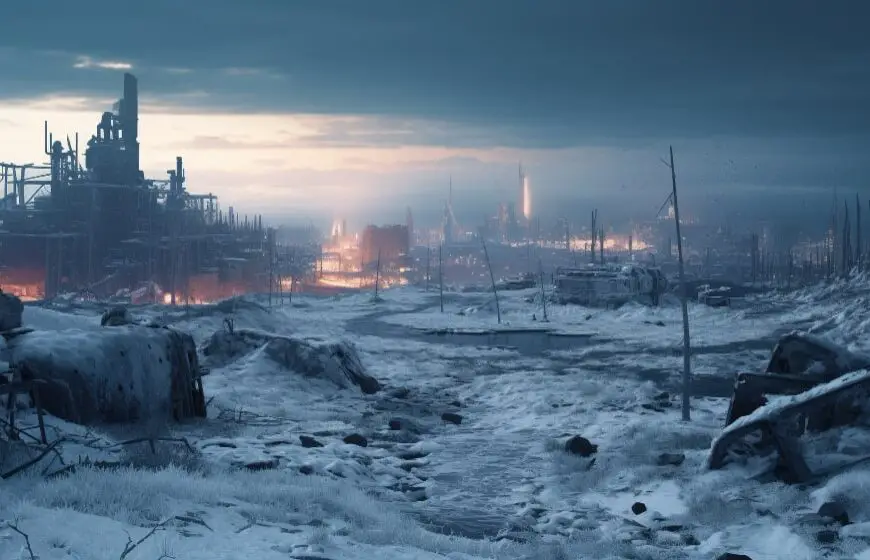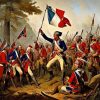The Cold War Unveiled-Origins Conflicts and Lasting Global Impact marks the period following World War II, characterized by an intense ideological rivalry that has devastated world politics, economies, and cultures for nearly 50 years. The effects of this prolonged conflict can still be felt today. In this article, we will explore the complexity of the Cold War by delving deeper into its origins, key players, significant events, and long-term impacts. Initially, we will look into it.
The Origins of the Cold War
- Post-War Power Dynamics: After World War II, two superpowers emerged: America and Russia. Though their common struggle against Germany and Japan led them together against Axis powers like communism, which was evident throughout, fundamental ideological differences led them to an adversarial rivalry that persisted.
- The Yalta Conference: Churchill, Roosevelt, and Stalin met at Yalta to discuss postwar Europe after WWII. At that conference in 1945, they revealed emerging tensions. While allies united against Nazi Germany at that point in history, differing visions for the future laid bare potential ideological discord among themselves in post-war Europe.
- Iron Curtain Speech: Winston Churchill’s Iron Curtain speech of 1946 marked an ideological divide between democratic Europe and Soviet Russia that marked the opening of Cold War politics and set in motion its development. There is ideological warfare between them.
II. Truman Doctrine and Marshall Plan
- Harry S. Truman’s Truman Doctrine (1947): attempted to counter communist influence globally by providing economic and military aid to nations combating its spread; it marked a dramatic departure in U.S. foreign policy then.
- Marshall Plan (1948): This economic recovery initiative sought to rebuild war-ravaged Europe while at the same time curbing communist influence in countries attempting to rebuild themselves through financial stability measures and supporting Berlin Airlift operations and NATO formation.
III. Berlin Airlift and NATO Formation
- Berlin Airlift (1948-1949): Western powers’ response to Soviet pressure was immense: using airlifting operations to supply essential supplies into West Berlin during its siege by Soviet troops was nothing less than extraordinary and displayed their determination against any attempts from Russia at pressure-cooking or subversion of Western values in any form. This humanitarian initiative highlighted both our desire and resolve to resist Soviet influence while simultaneously helping their cause against Communist persecution.
- Formation of NATO (1949): NATO was created as an anti-Soviet defense mechanism, further solidifying the division between the democratic West and the communist East.
IV. Korean War
The Korean War was not merely a conflict between the North and the South but a significant battleground in the Cold War, where the ideological and military might of the global superpowers were tested. The North’s invasion of the South, backed by Soviet and Chinese support, and the subsequent United Nations (led primarily by the United States) intervention underscored the global dimension of the Cold War. The 1953 armistice, which established the Korean Demilitarized Zone, did not signify a resolution but a stalemate, reflecting the enduring and intractable nature of Cold War conflicts.
V. Cuban Missile Crisis
- Soviet Missile Deployment (1962): In 1962, the Cuban Missile Crisis brought world nations close to nuclear war when Soviet Russia deployed missiles in Cuba – it proved both decisive and critical moments that put President John F. Kennedy and Premier Nikita Khrushchev through rigorous tests of their resolve and diplomacy skills.
- Resolution and Implications: Negotiations, tension, and standoffs led to Cuba removing missiles, thus averting nuclear catastrophe and setting diplomatic solutions in motion. This resulted in a detente between superpowers that led to future cooperation during space races.
VI. Detente and the Space Race
- Detente (1960s–1970s): Detente, or reduced tensions, emerged during the late 1960s. Both nations recognized the risks of arms proliferation and sought diplomatic channels to reduce their hostilities.
- The Space Race: As part of their Cold War rivalries, both countries vied with each other to achieve significant milestones in space exploration, turning space exploration into an ideological battleground and the Space Race into a symbolic battleground for ideological supremacy.
VII. Vietnam War
The Vietnam War highlighted the extent to which Cold War dynamics influenced local conflicts and shaped the destinies of nations. The U.S. involvement in Vietnam, driven by the domino theory and the goal of containing communism, led to one of the most contentious and tragic conflicts of the 20th century. The war’s legacy is profound, sparking widespread anti-war movements, reshaping U.S. domestic politics, and leaving Vietnam with profound physical and psychological scars. The conflict exemplified the destructive impact of Cold War ideologies on developing countries, leaving a legacy of division and recovery that continues to influence Vietnam and U.S. foreign policy.
VIII. Impact on Non-Superpower Nations
The Cold War had far-reaching ramifications beyond just America and Russia’s borders; its effect extended across numerous non-superpower nations. Superpower rivalries in Latin America, Africa, and Asia often exacerbated local conflicts while supporting authoritarian regimes, claiming they fought communism or capitalism. Throughout this era of Cold War politics were numerous coups, civil wars and revolutions—from the Congo Crisis to Salvador Allende’s ousting in Chile–indirectly or directly linked with geopolitics influencing these regions, often prioritizing geopolitical strategy over human rights or democratic principles for engagements which led to long-term instability, economic dependency, and social upheavals.
IX. The Arms Race and Nuclear Deterrence
- Mutual Assured Destruction (MAD): In recent decades, superpower rivalries reached unprecedented levels as both sides amassed nuclear arsenals that could guarantee mutual assured destruction (MAD). Although this kept direct conflict at bay, it increased global anxieties significantly.
- Strategic Arms Limitation Talks (SALT):An effort at globalization led to negotiations known as Strategic Arms Limitation Talks – agreements intended to limit nuclear weapon proliferation – as part of Strategic Arms Limitation Talks, or SALT, negotiations designed to moderate an arms race by setting limits. These negotiations demonstrated the desire for arms control amidst rising tensions.
X. The Fall of the Berlin Wall and the End of the Cold War
- Berlin Wall (1989): The fall of the Berlin Wall marked a historic turning point in Cold War dynamics, signaling an end to the physical and ideological division between East and West Europe as spontaneous unification movements spread rapidly throughout Eastern Europe, marking an inflection point where physical separation gave way to ideological conflict.
- Collapse of the Soviet Union (1991): Mikhail Gorbachev’s reforms and internal pressures resulted in the dissolution of the Soviet Union; with it came an official end to Cold War politics worldwide as democratic ideals triumphed globally and set in motion an exciting new period for world politics.
XI. Legacy and Global Implications
- Impact on Global Politics: After World War II ended, international politics underwent profound change, giving birth to numerous nations and power structures; bipolarity gave way to multipolarity in international affairs.
- Cultural and Technological Legacies: The Cold War profoundly impacted culture and technology. It gave rise to innovation while leaving its mark on literature, cinema, and scientific discoveries.
- Cultural Impact: The Cold War had an enormous cultural impact worldwide. Literature, cinema, music, and the arts all witnessed themes of espionage, nuclear terror, and ideological conflict during this era of history. Popular culture in the Western sphere often both criticized and romanticized communism’s struggle, examples being spy novels, Hollywood movies, and popular music of that period in general; while in the Soviet bloc, art and literature became tools of state propaganda, dissident artists found ways to resist their regime through writing poetry or creating works such as science fiction that often expressed anxieties while dreaming up dystopian futures or utopian realities with nuclear war at stake, imagining dystopian futures or utopian futures against possible nuclear destruction in their literature or arts genre works of all sorts during that era; even music played an instrumental part.
XII. Lessons Learned and Unlearned
- Retrospection on the Cold War: Reflection on the Cold War provides valuable lessons about ideological rigidity, diplomatic dialogue, and global cooperation to address shared challenges.
- Contemporary Implications: Though the Cold War no longer stands, its legacy still permeates modern geopolitical tensions; understanding its past can assist present decision-making and foster peace globally.
XII. Contemporary Relevance
Although the Cold War ended decades ago, its legacy and relevance remain part of modern geopolitics and global conflicts. Many international tensions today can be linked to Cold War policies and interventions, from the Korean Peninsula division to the complicated relations between Russia and Western nations. Recent trends of great power competition, cyber warfare, and ideological conflict resemble Cold War dynamics strikingly, underlining their relevance. Cold War lessons on diplomacy, nuclear deterrence, and international cooperation remain highly pertinent as society grapples with new threats such as climate change, pandemics, and non-state actors.
Conclusion
The Cold War marked an essential period in modern history, dominating much of the second half of 20th-century politics and society; its legacy still lives on today through political maneuvering, ideological disputes, proxy warfare to reparation funds – lessons from that epoch still have relevance when looking at modern geopolitics and world affairs.
Frequently Asked Questions (FAQs)
Q1: What were the primary causes of the Cold War?
At its heart, the Cold War originated in ideological differences between the United States and the Soviet Union exacerbated by post-World War II power dynamics and divergent visions for post-war society as evidenced in Yalta Conference meetings – something both parties involved were only too happy to share among themselves at that point in history.
Q2: Where did Vietnam fit into the Cold War narrative?
Vietnam served as a proxy war in which the U.S. supported South Vietnam and was pitted against the Communist North, representing an ideological struggle over influence within developing world nations.
Q3: What was the role of the Arms Race in the Cold War?
Arms races were at the core of Cold War tensions between superpowers – particularly between America and Soviet Russia, who both amassed nuclear arsenals for mutual assured destruction (MAD) and deterrence against direct conflict while at the same time increasing global anxieties.
Q4: Can you explain how the Berlin Wall’s fall contributed to the Cold War’s ending?
The fall of the Berlin Wall marked an end to the physical and ideological division between East and West and initiated unification movements across Eastern Europe.
Q5: What were the long-term global impacts of the Cold War?
Its end caused a dramatic transformation in world politics, leading to more multipolar arrangements; cultural expression and technological advances were profoundly changed, creating an indelible legacy of change for decades.
Q6: Does the Cold War continue to influence contemporary geopolitics?
While officially over, its legacy still resonates through current geopolitical tensions. Understanding past struggles helps us navigate present ones more successfully and work toward
creating a more peaceful global community.
Q7: What lessons have been drawn from the Cold War?
Analyzing its causes provides essential lessons about ideological rigidity, diplomatic dialogue, and global cooperation to meet shared challenges.
Q8: Why does the Cold War remain relevant today?
Although geopolitics has changed considerably since its climax, its lessons remain significant today; diplomacy, cooperation, and understanding remain central in meeting modern challenges.












[…] Korean conflict was symbolic of the Cold War’s global reach, serving as a proxy battleground where the ideologies of communism and democracy […]